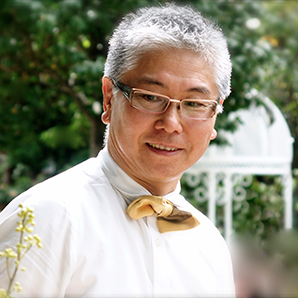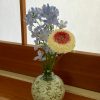The time to celebrate aki matsuri (autumn festivals) is almost here. Festivities take place throughout Japan, in places large and small, to commemorate a Shinto ritual celebrating a bountiful harvest and good catch. Unlike the larger, more prominent natsu matsuri (summer festivals), these autumn festivals impress the visitor with distinctly local delights. In Tokyo, portable shrines can be seen being paraded in each district at the beginning of September.
One of my favourite celebrations is Nezu Jinja Reitaisa, an annual festival of Nezu Shrine in Tokyo’s Bunkyo Ward. Founded more than 1900 years ago, it is one of three major festivals in the capital that have been celebrated since the Edo period. On 19–20 September, local ward towns reminiscent of the Edo period are filled with the vigour of the festival.
In keidai (shrine precincts), lots of stalls are set up. I can never pass them without thinking about the good old days of Tokyo. Using all their willpower, adults take part in a parade carrying portable shrines, followed by children with miniature versions.
I think autumn festivals symbolise hope and vitality for the future of the community. When people hear sounds of drumming and cries of “wasshoi wasshoi” (heave-ho) from people carrying portable shrines, they dash toward the sounds to cheer the participants on through the streets. Thanks to the whole community coming together, residents of each town pass enthusiasm for the festivals on to successive generations.
I grew up in a fishermen’s settlement in Kanonji City in Kagawa Prefecture. Part of the area’s aki matsuri celebrations is its Chohsa festival, named after a huge drumming platform, five metres high and weighing two tonnes, called a chousa. In different colours symbolising tradition and pride, a number of chousa are lifted up and carried in parades. Four adults sit and drum on the central chousa while a couple of people give them instructions. The drumming rhythm directs the carriers of the chousa on how to act, such as to go around, stop and slow down.
The climax of the festival is some 40 people who are carrying chousa running to the raucous sounds of ohayashi (flutes and taiko drum music of Japanese festivals). As a boy, when I heard the rhythmic beating of the drums, my body and soul were so overwhelmed with emotion that I used to run out of my house to see the parade, even if I was playing or having a meal.
Children in the area can join the festival. During breaks in the parade, they climb up a shichijo (tower of seven cushions) and are taught many aspects of the chousa by older children and young people. By so doing, these children gain a drumming heritage, and are then considered adults by local people.
One of my early memories as a man is my sense of pride when I first gripped bachi (drumsticks) and drummed. Even now, this season excites me with memories of chousa, with its luxurious embroidered ornaments of gold or silver thread and the sound of drums.
While is it said Japanese people can be vague, we are proud of our festivals and would enthusiastically and gladly share details of them if given the opportunity.
Try and experience Japan’s autumn festivals amid a dry, cool wind and under a blue sky. Why don’t you join a festival this autumn and be inspired?






